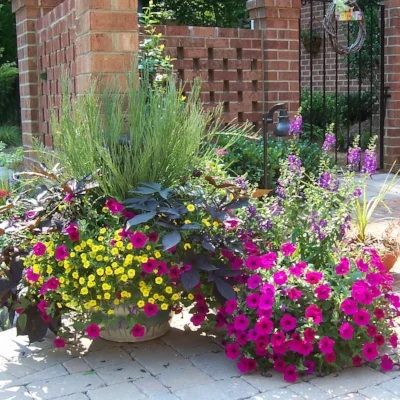Evergreen Shrubs: Is it Normal Discoloration, or Winter Damage?

This fernspray cypress may be completely brown, but it's very much alive.
Are you worried that this winter's weather caused more damage than normal to your landscape? Here is how you can tell if your discolored evergreen plants are simply affected by cold, or actually dead.
Many species of evergreen trees and shrub will turn bronze or brownish in the winter. This color change is a reaction to low temperatures and sunlight-usually the more sunlight the plant receives the more pronounced the change is, and can range from olive-green to nearly purple. It’s usually referred to as “winter bronzing”.
The bronzing is caused by mild desiccation of the needles or leaves, dulling the green colors normally seen in warmer weather and allowing the underlying brown, rust or purplish colors to show through. This is similar to why deciduous leaves change color in the fall—after the green chlorophyll dies in preparation for winter, the true color of the leaf is revealed. (Neat, huh?) As winter progresses, the ground freezes and the sun and wind evaporate more water from the leaves or needles than the plant can uptake to replace it, and the plant gradually turns from green to brown, bronze, or even orange or purple.
“Really dead” evergreens are brown in a different way. Instead of a gradation of colors from olive-green to bronzy-purple, dead branches are uniformly orange-brown to dark brown. Where a branch with winter bronzing is still flexible and supple, a dead branch is “crispy” and often snaps when bent.
When a single branch or "chunk" discolors like this while the rest of the plant stays green, that section is usually dead. Test by scraping the bark with your fingernail. If you see green below the brown or grey bark the branch is alive. If it's brown it's dead, and a sickly olive green color indicates it is dying. You can safely prune out dead sections without hurting the plant; if the damage was limited, you may barely even notice the loss. If only the ends of the branches are dead, prune back to the point where the fingernail scrape test indicates it's still alive. You may need to do a little additional pruning to even everything out.
If larger areas die out, sometimes the symmetry of the shrub is ruined. For some shrubs (azaleas, abelias, hollies and others), a hard renovation pruning will allow the entire shrub to regrow evenly. In other shrubs, including many (but not all) needled evergreens, the loss of a section is never fully recovered because of the way they grow. In those cases, replacement is usually the best option.

Here are the common ways your landscape is telling you it needs help.
Controlling fall and winter weeds is a constant battle. Here are some of the reasons control can be difficult.
New Garden Landscaping & Nursery feels that Boxwood Blight could have a major impact on landscapes containing boxwood in the near future. Here’s what you need to know about the disease.
Since fall is the time to plant spring blooming bulbs, here are the answers to some common questions about bulbs.
Don't panic, there are a few common (and benign) reasons that trees drop leaves in summer.
Ugh! What’s nastier than a sack of crawly caterpillars hanging from your trees? How about a dozen of ‘em?
Quick tips for avoiding the fungal disease Brown Patch in lawns
Blueberries make great container plants! Watch this video from our friends at Espoma for tips and see how easy it is to grow blueberries in containers.
Good container plantings require little maintenance aside from watering and can enhance your home through the spring, summer, and fall.
Unlike some other flowering plants, crapes will develop their flower buds on new growth.
This is a question we have been asked frequently this fall.
Where and why this is not bad advice, and where it’s a terrible idea.



















